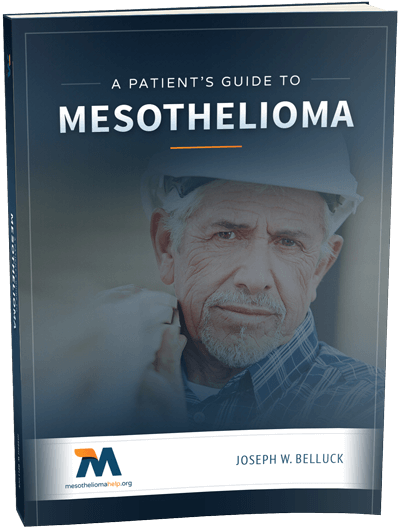Category: Research

Mesothelioma Researchers at University of Hawaii Cancer Center Move Into State-of-the-Art Facility
Researchers at the University of Hawaii Cancer Center are well known for their groundbreaking research into the causes of mesothelioma, and for finding novel treatments to battle the rare, asbestos-caused cancer. Now the team has moved operations into a new environmentally green, $16 million, 150,000-square-foot cancer research facility, where the director of the center says by making the best use of the facility the researchers will “propel the UH Cancer Center to the forefront of cancer research.”
Michele Carbone, MD, PhD, the country’s premier authority on mesothelioma and director of the University of Hawaii Cancer Center, wrote in his message for the Winter 2013 newsletter, “we want to build a culture of success that revolves around teamwork, mutual respect, scientific integrity, and a spirit of humility.”
The team is hoping to build on the success of a study led by Carbone where they found that mutations of the BAP1 gene, which is involved in tumor suppression, might underlie mesothelioma in people with a strong family history of the disease. The study was designed to identify individuals at high risk of mesothelioma.
The new facility allows administration, researchers, and faculty to work in one facility. “This will allow us to better share knowledge and resources in a collaborative environment, where scientists, students, and staff work together cooperatively,” said Carbone.
The University of Hawaii Cancer Center is a National Cancer Institute (NCI) designated Cancer Center. The five-year designation not only brings recognition to UH as being one of the nation’s best cancer centers, but it also provides vital funding for continued research. The UH Cancer Center is one of only 66 NCI-designated cancer centers in the United States, and the only one in Hawaii and the Pacific region. Construction of the new facility was part of the agreement with NCI.
Carbone praised The Friends of the University of Hawai‘i Cancer Center for its support in advocating for the new building. Carbone said it was the Friends “perseverance that eventually generated the momentum and allowed us to overcome many barriers and be successful.” He added, “their support has been, and remains, invaluable to us. We would not be here without them.”
“We will make Hawaii the place where scientists from all over the world come to meet and establish collaborations to find new ways to prevent, diagnose, and treat cancer,” said Carbone.
The funding for the new facility was provided by the State of Hawaii.
Mesothelioma is a rare form of cancer that can form in the lining of the lungs, abdomen or heart which is known to occur as a result of exposure to asbestos. Often referred to as “asbestos cancer,” it’s highly aggressive and difficult to treat. Carbone has dedicated his career to finding an effective treatment for the disease.
Understanding the Emotional Support Needs of Patients Undergoing Mesothelioma Treatment
Medical researchers at Memorial Sloan-Kettering Cancer Center in New York are currently conducting a clinical trial examining the emotional support and psychosocial needs of patients undergoing treatment for mesothelioma. The researchers are studying how mesothelioma, an aggressive form of cancer, affects patients’ emotional and physical well-being and quality of life.
Mesothelioma is a terrible disease caused by exposure to asbestos. It takes a toll on patients and their families. Patients receiving treatment for mesothelioma may experience mood swings, feelings of isolation and symptoms of anxiety and depression.
The laudable goal of the research is to find ways to reduce the physical and emotional strains of mesothelioma patients and develop better ways of coping.
As part of the clinical trial, mesothelioma patients are invited to join a therapeutic internet-based discussion group, allowing patients to take part from the comfort on their own homes. The small groups of three to five patients meet for approximately an hour once a week.
Patients who have been diagnosed with pleural mesothelioma, a cancer of the lining of the lung and who are undergoing treatment at Memorial Sloan-Kettering Cancer Center are eligible for the trial. Find contact information about the clinical trial.
Approximately, 2,500 to 3,000 people are diagnosed with mesothelioma each year in the United State. Most are older workers, retired workers and veterans who were exposed to asbestos in workplace or during military service. For patients who are diagnosed with less advanced mesothelioma, there are treatments available to try to manage the disease.

New Mesothelioma Cell Analysis Technique May be Borrowed from Astronomers
Cancer researchers are now taking tips from astronomers when it comes to analyzing cell slides. In order to definitively diagnose many cancers, especially rare cancers such as mesothelioma, a tissue biopsy must be examined through a microscope to identify abnormal cells. However, if researchers in the UK have their way, an automated process borrowed from their science comrades who focus on outer space could make microscopic analysis a thing of the past.
According to a study in the British Journal of Cancer, scientists from the Cancer Research UK Cambridge Institute, and the Department of Oncology and the Institute of Astronomy at the University of Cambridge, collaborated to adapt techniques “used by astronomers to automatically pick out indistinct objects in the night sky” for use in the cancer lab. The researchers developed image analysis algorithms adapted from astronomical algorithms in order to automate immunohistochemistry, the technique used in microscopic analysis to diagnose cancer.
Cellular analysis and biopsy techniques used when checking for cancer, as well as when determining the efficacy of a treatment, were discussed recently by a panel of oncologists on OncLive’s Peer Exchange Series. The oncologists agreed that biopsy results can be used not only to diagnose cancer but to drive a cancer patient’s treatment plan. Anne S. Tsao, MD, Director, Mesothelioma Program, The University of Texas MD Anderson Comprehensive Cancer Center, said when analyzing tissue samples, physicians need to “shoot for genetic testing and personalized medicine for treatment decisions.”
Professor Carlos Caldas, from Cancer Research UK’s Cambridge Institute, and senior author of the study, “Astronomical algorithms for automated analysis of tissue protein expression in breast cancer,” suggested that sophisticated techniques such as this will help researchers better understand “the key genes and proteins important in predicting the success or failure of different cancer treatments.”
“It’s great that our software, which was originally developed to help track down planets, is now also being used to help improve the outlook for cancer patients, much closer to home,” said Dr. Nicholas Walton from Cambridge University’s Institute of Astronomy in a press release from Cancer Research UK.
The researchers compared the results of the manual process with the automated process after measuring the levels of three different proteins linked to more aggressive cancers across 2,000 tissue samples from breast cancer patients.
“The results have been even better than we’d hoped,” the researchers reported. However, they pointed out that there is much more testing to be done, with the next test involving samples from more than 20,000 breast cancer patients.
Julie Sharp, senior science information manager at Cancer Research UK, says: “This unlikely collaboration between astronomers and cancer researchers is a prime example of how, by working together, scientists from different disciplines can bring about innovative new solutions for beating cancer.”
Mesothelioma patients have limited treatment options; however, breakthroughs like this can open another path towards personalized medicine. Treatments geared to patients’ unique genetic characteristics improve their survival chances. Mesothelioma, a cancer of the lining of the lungs, abdomen and heart caused by past exposure to asbestos, is diagnosed in close to 3,000 Americans each year.

Mesothelin May Play Multiple Roles in Spread of Mesothelioma, Other Cancers
Mesothelin is a protein found on the surface of some cells in the human body. Its biological purpose is a bit of a mystery frankly. But it occurs in overabundance in certain types of cancer cells including ovarian cancer, pancreatic cancer and mesothelioma, a cancer of the lining of the lungs and abdomen. Therefore, it’s on scientists’ radar screen.
Scientists are evaluating the role of mesothelin in the spread of cancer and its potential usefulness as a signal of cancer for doctors who are trying to diagnose a patient’s disease such as mesothelioma, a cancer caused by asbestos exposure. There are treatments for mesothelioma, but as yet, there is no known cure. Approximately 2,500 to 3,000 people in the U.S. are diagnosed with malignant mesothelioma each year in the U.S., primarily as a result of asbestos exposure at a workplace or during military service.
In a mesothelioma researcharticle published in February 2013 in the journal Anti-Cancer Agents in Medicinal Chemistry, medical researchers at the National Cancer Institute in Bethesda, Maryland and East China Normal University in Shanghai, say that there are three ways that mesothelin may play a role in the advance of cancer, as previous studies have suggested:
- Implantation — Mesothelin may aid in the implantation of tumors in the abdominal cavity, leading to peritoneal mesothelioma;
- Survival — Mesothelin may play an important role in the survival of cancer cells;
- Resistance — The presence of mesothelin may cause resistance to certain chemotherapy drugs.
As a result of the key role of mesothelin, the researchers say that a drug that neutralizes the functionality of mesothelin may be helpful in cancer treatment, making chemotherapy drugs more effective, for instance. Some antibody drugs that disrupt the function of mesothelin are currently being evaluated in clinical studies.
The researchers say additional research is needed to evaluate the role of mesothelin in the growth and spread of malignant tumors, cancer cell survival and drug resistance. They conclude that studies on mesothelin biology may give opportunities for more effective antibody therapy targeting mesothelin in solid tumors.

Assessing The Risk of Mesothelioma for Car Mechanics and Brake Technicians
A recent study in the International Journal of Occupational and Environmental Health suggests that automobile mechanics and car service technicians may be at risk of developing mesothelioma from exposure to asbestos-containing brake dust. Malignant mesothelioma is an aggressive type of cancer that develops in the lining of the chest cavity and is caused by the presence of asbestos fibers.
Researchers at Oregon Health & Science University and Portland State University conclude that there is a “net of evidence” favoring a causal relationship between exposure to brake dust containing chrysotile asbestos and mesothelioma. They say that the brake manufacturers’ position that there is an insufficient chain of evidence to link brake dust to mesothelioma is inaccurate. They suggest that further research is needed.
While many brakes and clutches in newer model cars do not contain asbestos, some brakes shoes and pads and clutch linings in use even today in the United States contain asbestos, according to the U.S. Environmental Protection Agency. If you work at a brake shop or a auto repair garage, you cannot determine whether brake or clutch components contain asbestos just by looking at them. But if the brakes or clutches contain asbestos, then the dust may contain asbestos.
Brake and clutch dust is often visible when a brake disk, drum or clutch cover is removed from a car or truck. The dust may contain asbestos. If you are an auto mechanic, you should not blow dust from brakes or clutches, according to EPA’s current best practices for avoiding asbestos exposure.
Using compressed air, a brush or a dry rag to clean brake assemblages has the potential to expose you to asbestos fibers, according to the U.S. Environmental Protection Agency. Compressed air blows dust into the air. Airborne dust allows the microscopic particles of asbestos to be inhaled.
Mechanics should assume that brakes have asbestos-type shoes and use brake dust control procedures, according to the Occupational Safety and Health Administration. If a mechanic assumes a brake does not contain asbestos, they may be exposed to asbestos. Exposure to asbestos can lead to mesothelioma, lung cancer and asbestosis, a chronic scarring of the lungs.
The symptoms of mesothelioma and asbestos-related disease typically take 20 years to 50 years to appear. A mechanic who worked on auto brakes in the 1960s may only recently have begun experiencing symptoms or been diagnosed with mesothelioma.
Sources:
- Study in the International Journal of Occupational and Environmental Health
http://www.tandfonline.com/action/cookieAbsent - Portland State University
https://www.pdx.edu
Free Mesothelioma Patient & Treatment Guide
We’d like to offer you our in-depth guide, “A Patient’s Guide to Mesothelioma,” absolutely free of charge.
It contains a wealth of information and resources to help you better understand the condition, choose (and afford) appropriate treatment, and exercise your legal right to compensation.
Download Now